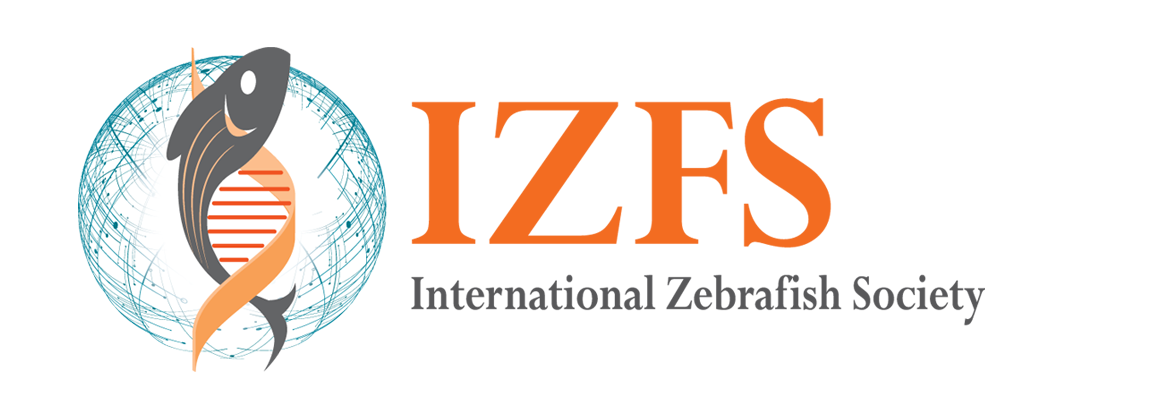27th Japanese Medaka and Zebrafish Meeting
By Makoto Kobayashi
The 27th Japanese Medaka and Zebrafish Meeting was held online from September 16 to 17, 2021. Members of the organizing committee were Drs. Makoto Kobayashi (Univ. Tsukuba, chair), Motoyuki Itoh (Chiba Univ.), Fumi Kubo (Natl. Inst. Genet.), Takaaki Matsui (Nara Inst. Sci. Tech.), Yukiko Ogino (Kyushu Univ.), Norimasa Iwanami (Utsunomiya Univ.), Hiroki Matsuda (Ritsumeikan Univ.), and Isao Kobayashi (Kanazawa Univ.). The meeting was initially planned to be an onsite-online hybrid style at the Epochal Tsukuba International Congress Center in Tsukuba, but it became quite difficult to do it due to the serious 5th wave pandemic in Japan of COVID-19. After discussing with organizing committee members and others, we decided to change it to an online only meeting using the Zoom video-conferencing service. Even though we changed the meeting style, there were more than 200 participants, and the meeting was quite active.
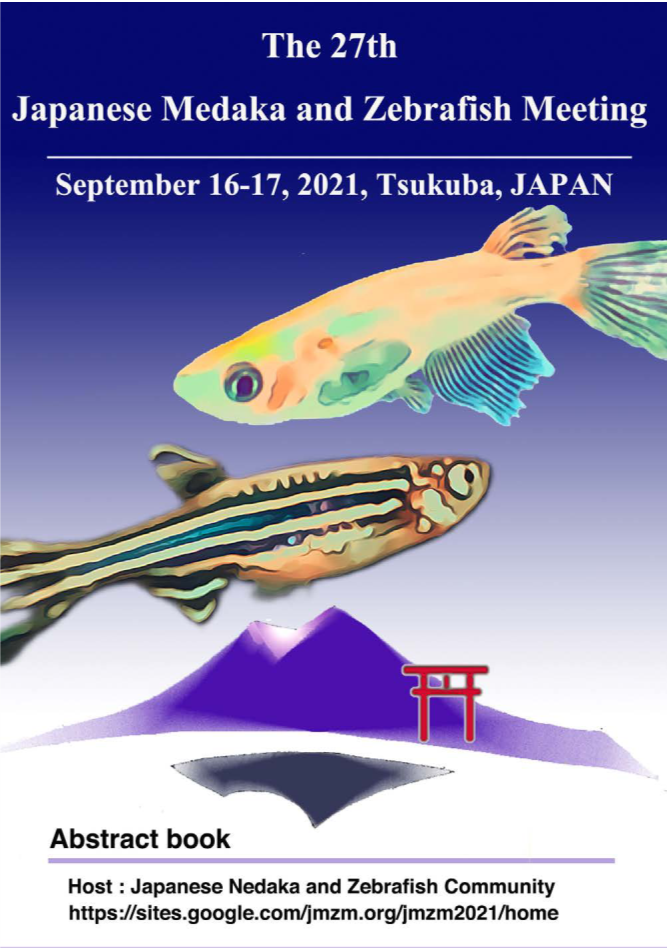
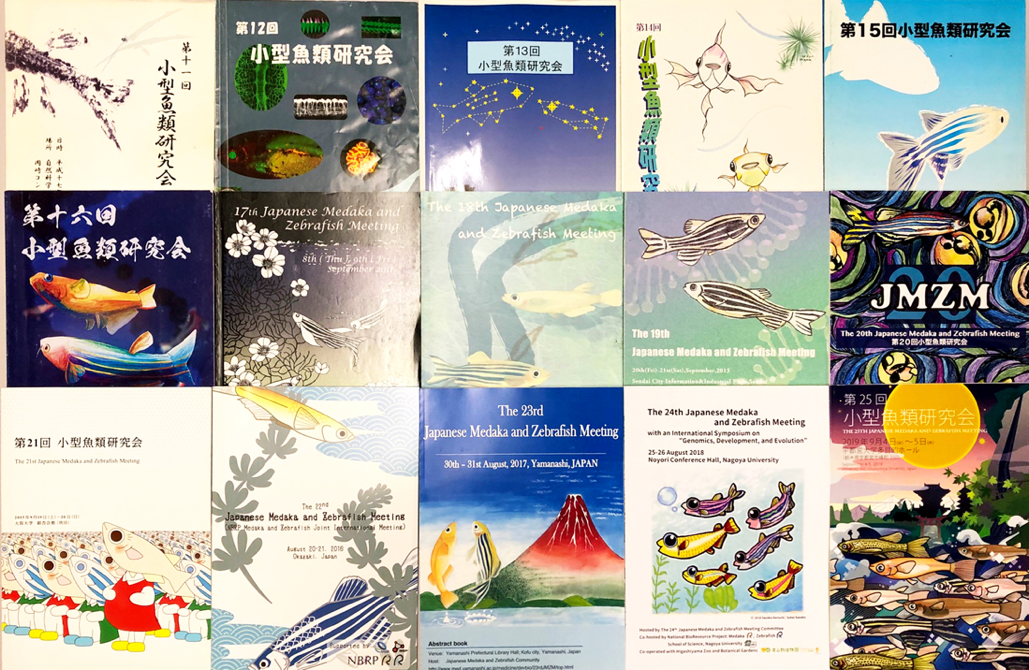
Fig. 1: Abstract books. (Left) 27th meeting. (Right) From 11th to 25th meetings.
The first Japanese Medaka and Zebrafish Meeting was held at the National Institute for Basic Biology in Okazaki in 1995, which was organized by a society of researchers who were using zebrafish and/or medaka fish for their studies. Members of this society have led studies using zebrafish/medaka fish in Japan in a wide range of research areas. Since then, the meeting has been held annually to promote and encourage active communication among fish-using researchers in Japan (Fig. 1). From the 17th meeting in Mishima in 2011, the meeting has been fully conducted in English and welcomes participants from abroad, especially in Asian countries.
During the two day meeting, we had 3 keynote lectures, 14 oral presentations, and 28 poster presentations. In keynote lectures, Dr. David Traver of the University of California San Diego (USA) presented his findings on molecular regulation in hematopoietic stem cell specification (Fig. 2). Dr. Takashi Kawashima of the Weizmann Institute of Science (Israel) talked about identification of neural controls during swimming based on newly established imaging/recording methods. Dr. Takashi Yoshimura of the Nagoya University (Japan) introduced his discovery of seasonal changes of color perception and anxiety-like behavior in medaka fish and the undelying molecular basis of these changes. After each lecture, a 15 min "Meet the speakers" opportunity was provided using Zoom breakout rooms to allow the participants to communicate with speakers. These sessions were quite active and successfully enhanced the interaction between the speakers and the audience.

Fig. 2: Invited speakers for the keynote lectures.
"Meet the speakers" opportunities were also provided for oral presentation sections, promoting fruitful discussions. For poster presentations, 2 min short talks were performed by each presenter at the main Zoom meeting, followed by discussions in 28 Zoom breakout rooms. In comparison with previous meetings, there was an increase in topics related to behavior and aging using adult fish and in studies using CRISPR-Cas9 technology and single-cell RNA-seq analysis. Eight young presenters received Excellent Presentation awards (Fig. 3). Among them, Ms. Qi Meng from Nagoya University won the First Place Excellent Oral Presentation award for her paper entitled "Biochemical properties and novel function investigation of the blood coagulation factor, fibrinogen by using medaka (Oryzias latipes) as model organism", and Mr. Tamai Shinsuke from the University of Tsukuba won the First Place Excellent Poster Presentation for his paper titled "Effects of acute cold stress on gene expression in skeletal muscle of zebrafish"
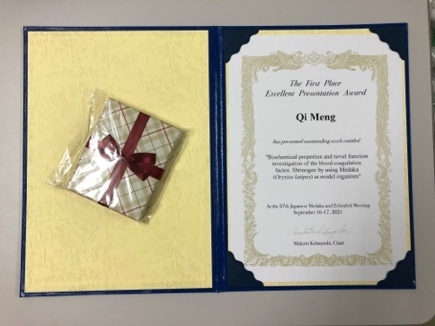 |
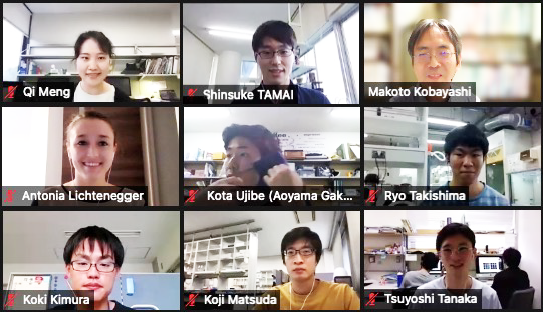 |
Fig. 3: Excellent Presentation awards.
| On the first evening, a Social Hour was held outside the main meeting using an internet platform SpatialChat (Fig. 4). It was organized by 3 active graduate students: Mr. Junya Tamaoki (Univ. Tsukuba), Ms. Moeno Imai (Chiba Univ.), and Mr. Hodaka Yamamoto (Nara Inst. Sci. Tech.). The biggest problem under the COVID19 pandemic is a difficulty in deepening exchanges among researchers. It was no exception for this meeting, but due to their ambitious attempt, we enjoyed a fruitful Social Hour. | 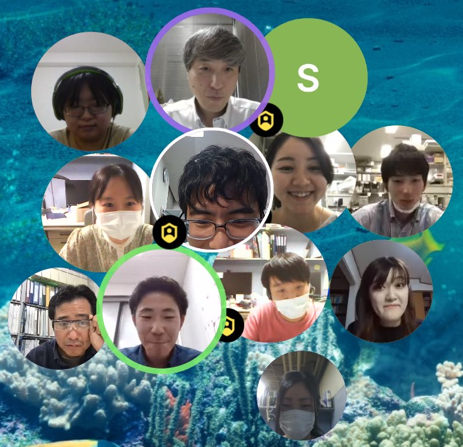 Fig. 4: Social Hour |
The most important feature of this meeting is that not only zebrafish researchers but also researchers studying medaka and other model fish, such as African turquoise killifish, joined together. The next Japanese Medaka and Zebrafish Meeting will take place in August 2022 at the National Cerebral and Cardiovascular Center in Osaka (Dr. Kazu Kikuchi, chair). We hope that it will be an onsite meeting.
Finally, I would like to acknowledge the support of the Terumo Life Science Foundation, the Nakatsuji Foresight Foundation, and the Suntory Foundation for Life Sciences, together with that of companies: Medakahonpo, Iwaki, Meito Suien, Leica Microsystems, Bex, Nepa Gene, Tecniplast Japan, and Nikkyo Technos.

